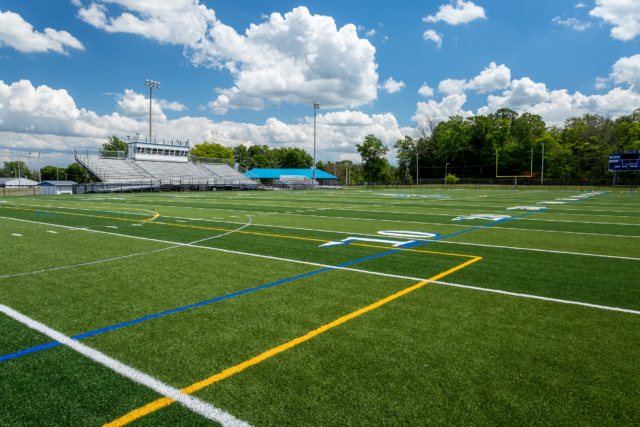Athletic Fields Will Be Put to the Test

Through this pandemic, the resiliency of those involved in athletics is inspiring. Athletes and coaches have found new ways to practice under constantly changing guidelines. Similarly, facility and athletic directors have reconstructed schedules or seasons with little notice. The need for planning and teamwork has never been more apparent. These COVID-19-related challenges are having an impact on athletic facilities, so being prepared for a variety of challenges is imperative.
With condensed schedules and social distancing guidelines, the competition for space is elevated – both indoors and out. That competition can put a strain on the expectations of staff and the facilities themselves. The Centers for Disease Control and Prevention (CDC) has recommended prioritizing outdoor practice and play over the use of indoor facilities as much as possible. With snow rapidly approaching and more teams having to play during the spring season (such as the fall II football season), winter can be used to take inventory of equipment and materials while also planning a maintenance schedule for early spring activities.
Natural Grass Fields Will Be Pushed to the Limits
The ability of natural grass fields to handle the increased pressure will depend highly on soil characteristics, irrigation, and drainage.
- Soil samples can be taken and sent to local testing facilities that can provide recommendations such as pH correction, grass seed (for over-seeding), or soil amendments that may improve drainage.
- Some districts may plan to make drainage improvements that can be implemented without taking a field offline. This can be accomplished with the installation of narrow sand channel drains.
- Despite all the measures a district can take, natural grass fields ideally should not be used more than 22-24 hours a week to allow the grass time to recover. Recovery time should be included and identified in the prepared practice and games schedules.
Synthetic Turf Fields Will Require Additional Maintenance
While synthetic turf fields can handle the additional wear and tear, the fields may require additional grooming to maintain an even, well-distributed infill layer.
- The grooming will keep the fibers in good upstanding condition, ensure appropriate footing, provide predictable ball bounce, and maintain safe head injury (gmax) levels.
- Concerns regarding disinfection of the playing surface should be discussed with the turf manufacturer to ensure the warranty is not affected.
It is expected that athletic directors and coaches will remove snow from athletic fields sooner this year with the expanded number of sports and teams anticipated. While synthetic turf fields have the ability to provide the same reliable footing and cushion in freezing temperatures, natural grass fields can be unpredictable and quite hard. Playability of grass fields should be monitored daily.
Looking forward to the months ahead as the season changes from winter to spring, there will be a variety of challenges to social distancing requirements, field maintenance, and athlete safety. With the upcoming fall II season in NY, football will be pushed into an already full schedule of track, baseball, softball, and lacrosse. Turf fields and well-maintained natural grass surfaces with sufficient drainage will be essential to get teams off and running (pun intended) as soon as possible. Keeping up with maintenance will provide longevity of these prized fields, which in turn will allow for athlete safety and social distancing.